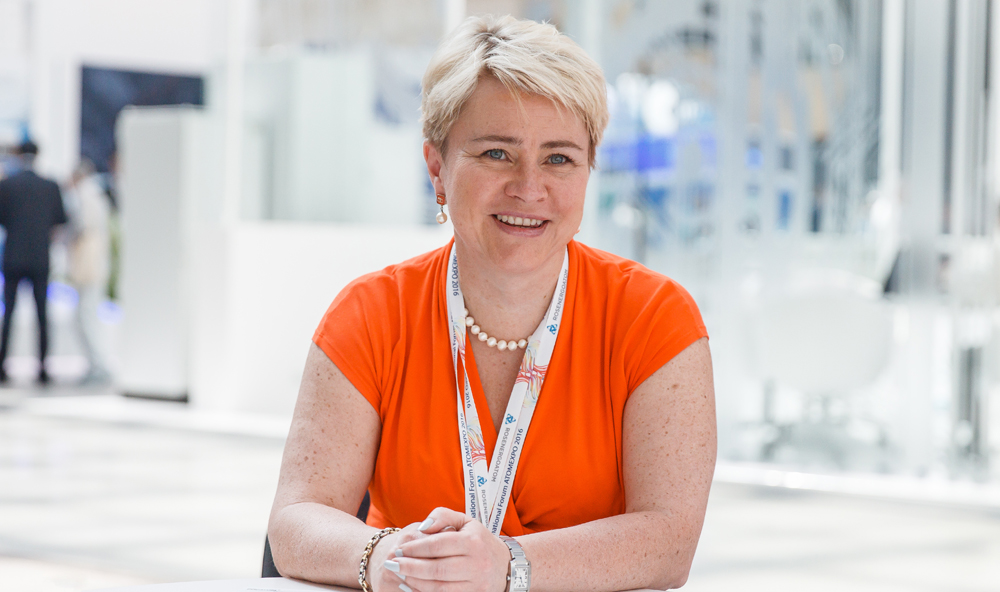
“It Is My Personal Motto”
back to contents– According to recent media reports, Fennovoima sees no reason for a potential increase in costs of Hanhikivi 1 project. Do you think the risk is underestimated and the costs could grow?
– Generally speaking, I doubt it. I strongly believe that we do have a good budget and fixed contracts. So, we do know what it will cost for Fennovoima. Of course, you never know what will happen in 10 years’ time. I think that the biggest chance might arise in a very long term if there are some changes in the legislation and more requirements, so to speak, a change in the design might bring extra costs. This might be the risk.
– How do you assess the cooperation between Fennovoima and Rosatom? How is the project going?
– In general, Rosatom as well as its engineers, material resources and know-how are all top-level. Rosatom needs Fennovoima as a partner since we are the licensed coordinator. We have established a working group so that our engineers could meet at least once a month to go through all the issues. The Russian design still needs to be localized to comply with Finnish conditions and requirements. That’s what we are working on now. There is a lot of work but, as I have said, we are doing it in close cooperation.
– The reactor is scheduled for the startup in 2024. Is it realistic in your opinion?
– It is realistic. It is a long-term and challenging task, but let’s do it! It is my personal motto.
– We have planned originally much more staffing work in Fennovoima than in Olkiluoto. We have spent a lot of time just to make the time schedule. These were the major differences. We are learning lessons from Olkiluoto 3. Now I think the Olkiluoto project is in its final phase and I wish them luck.
– Finland has a negative experience with Olkiluoto-3. In your opinion, was this experience taken into account in the Hanhikivi project?
– These are different projects. But actually our regulator STUK has created new safety requirements after Olkiluoto 3. The guidelines we are following now are partially different from those used for Olkiluoto 3. I think we have gained some more quality oriented regulations from STUK than Olkiluoto 3 had originally. This will be the basic difference, and I would say that we lay a greater emphasis on cooperation. We have planned originally much more staffing work in Fennovoima than in Olkiluoto. We have spent a lot of time just to make the time schedule. These were the major differences. We are learning lessons from Olkiluoto 3. Now I think the Olkiluoto project is in its final phase and I wish them luck.
– The share of nuclear power in Finland is more than 30%. What is an ideal percentage in your opinion? What should the share be?
– I wouldn’t estimate the percentage. If we talk about all these carbon free energy targets set by the EU, nuclear power needs to be included in our package to keep the baseload and it has a major role when tackling carbon free challenges. Of course, it is about wind and solar power solutions as well. Unfortunately, we have used up all the hydro power solutions. But as I have said nuclear should be in the package and its role is to give the baseload.
– How your potential cooperation with Posiva in the Hanhikivi-1 project is going concerning the spent fuel and waste management in the future?
– This is a very interesting question as by the end of this month we need to present an agreement with the companies that actually own Posiva (Fortum and TVO) – Posiva is an expert organization responsible for the final disposal of spent nuclear fuel of the owners, or present an environmental impact assessment program to the ministry. At the moment we are discussing cooperation with Posiva. It has the know-how; we have the funds and time to find solutions that the repository phase will need. It will happen in the 2090s. It is far, far away but we will reach it step by step. You will see what we are to say by the end of the month.
– How do you address environmental issues? I heard that some environmental experts were against the project because of some indigenous frogs listed as protected species. How do you deal with this sort of public concerns?
– There are certain environmental requirements we have to fulfill, and one of them regards this small frog species. We were supposed to arrange for their relocation. Now the frog population is larger and they have a new pond.
– My last question is about your impression of AtomExpo.
– Well, this is my third time here. In my opinion, it is getting more international. There is much of Rosatom to see here. AtomExpo has a lot of interesting speakers, giving a great opportunity to meet colleagues from around the world. I have a huge number of meetings on the schedule already.
– Thank you very much.




